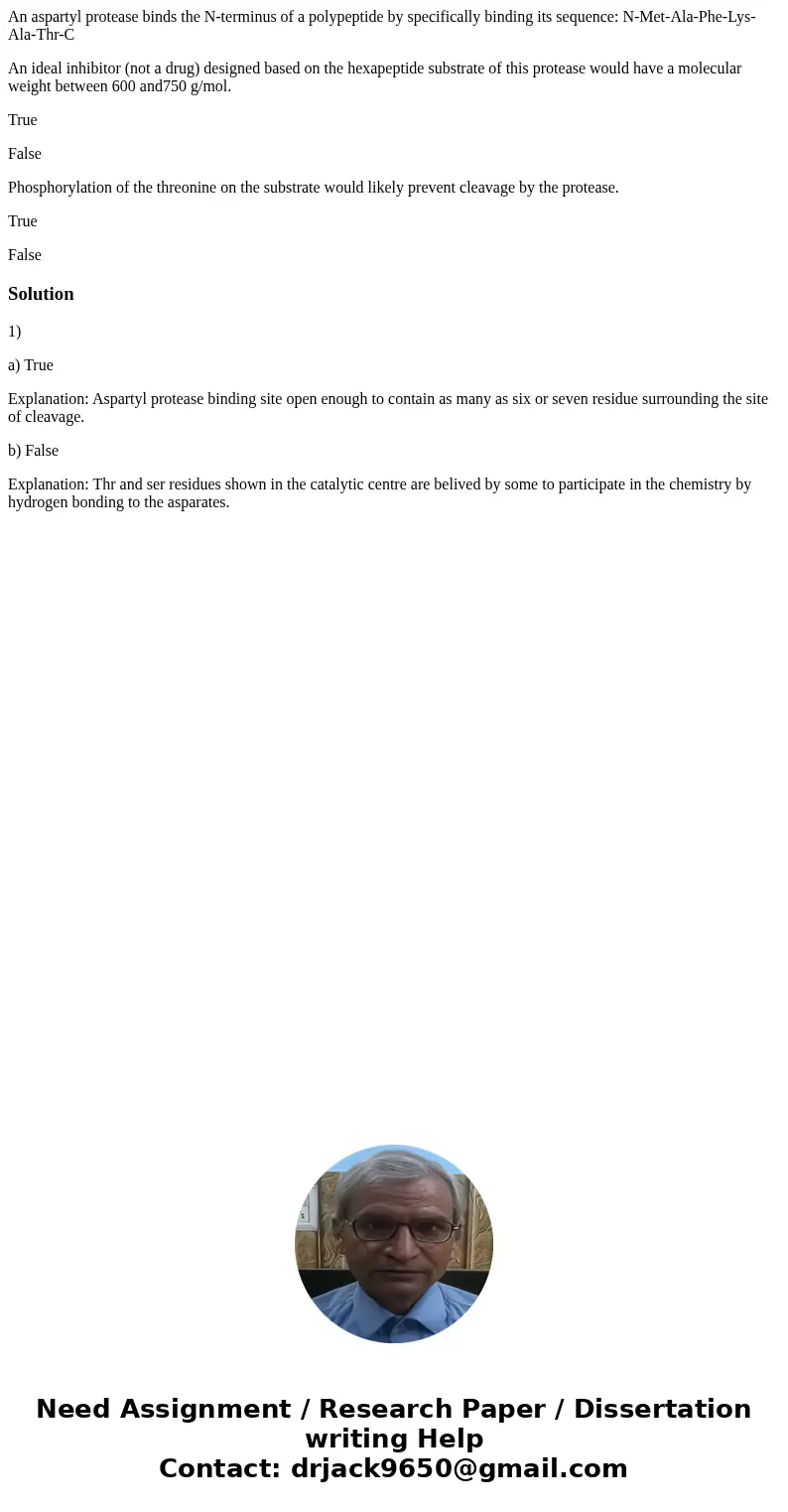An aspartyl protease binds the Nterminus of a polypeptide by
An aspartyl protease binds the N-terminus of a polypeptide by specifically binding its sequence: N-Met-Ala-Phe-Lys-Ala-Thr-C
An ideal inhibitor (not a drug) designed based on the hexapeptide substrate of this protease would have a molecular weight between 600 and750 g/mol.
True
False
Phosphorylation of the threonine on the substrate would likely prevent cleavage by the protease.
True
False
Solution
1)
a) True
Explanation: Aspartyl protease binding site open enough to contain as many as six or seven residue surrounding the site of cleavage.
b) False
Explanation: Thr and ser residues shown in the catalytic centre are belived by some to participate in the chemistry by hydrogen bonding to the asparates.

 Homework Sourse
Homework Sourse